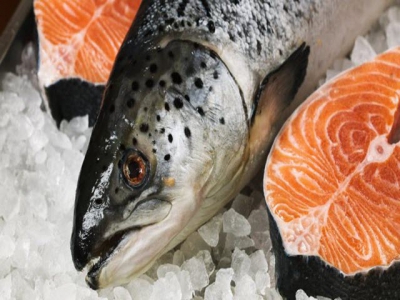Gene expression response to sea lice in salmon skin identified

Sea lice have major negative economic and animal welfare impacts on global salmon aquaculture.
Scientists have identified gene expression responses that may help explain why some salmon are more resistant to sea lice than others, according to researchers at The Roslin Institute in Scotland.
Researchers from the institute and the University of Chile investigated how expression of genes in salmon skin respond to infestation with sea lice and how this varies between resistant and susceptible animals.
Sea lice have a major negative economic and animal welfare impact on salmon aquaculture globally, the institute said. Previous research has shown that certain individual salmon are better able to resist infection with sea lice than others, and this is partially due to genetics.
Dr. Diego Robledo, a postdoctoral research fellow working in professor Ross Houston’s laboratory at The Roslin Institute, used RNA sequencing to study the skin transcriptome — the set of all RNA molecules produced by the cells of an organism — of Atlantic salmon parasitized with sea lice. He then looked for differences in gene expression between salmon with high and low resistance to the sea lice, an announcement said.
The team observed that several genes responsible for immune response and pattern recognition are different between resistant and susceptible salmon, the institute said. Differences are also visible with regard to myogenic and iron availability factors.
“In this study, we asked the question, ‘How do resistant fish and susceptible fish differ in their response to sea lice infestation?’ by comparing the gene expression profiles of these two groups. The results shed light on the genes and pathways that play a role in genetic resistance and may be useful in the future for developing new prevention or control mechanisms, including enhancing selective breeding to produce more resistant stocks,” Houston said.
The research was part of a project funded by the Newton Fund through the U.K.’s Biotechnology & Biological Sciences Research Council and is a bilateral funding initiative between a U.K. research council and Chilean counterparts CONICYT. Chile's side of the project was led by Dr. José Manuel Yáñez from the University of Chile in Santiago, Chile, and was done in collaboration with salmon breeding company AquaInnovo.
Related news
 Vietnam’s shrimp exports face technical barriers in Korea
Vietnam’s shrimp exports face technical barriers in Korea Vietnamese shrimp exporters need to improve quality of their products, and update procedures and requirements in the Republic of Korea (RoK)
 Trà Vinh takes measures to protect shrimp from disease
Trà Vinh takes measures to protect shrimp from disease The People’s Committee of Trà Vinh Province in the Mekong Delta has approved a plan to invest VNĐ2.3 billion (US$98,669) to protect intensive and semi-intensive
 Tuna exports likely to hit $500m in 2018
Tuna exports likely to hit $500m in 2018 Việt Nam’s tuna export revenue is likely to reach the target of US$500 million in 2018 after hitting $351 million in the first seven months of this year